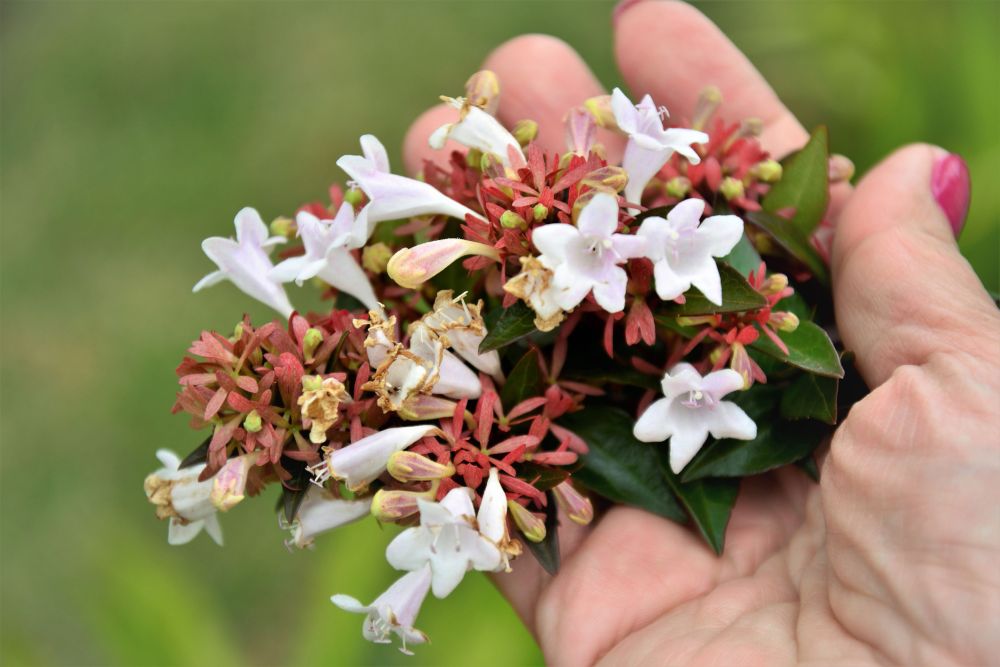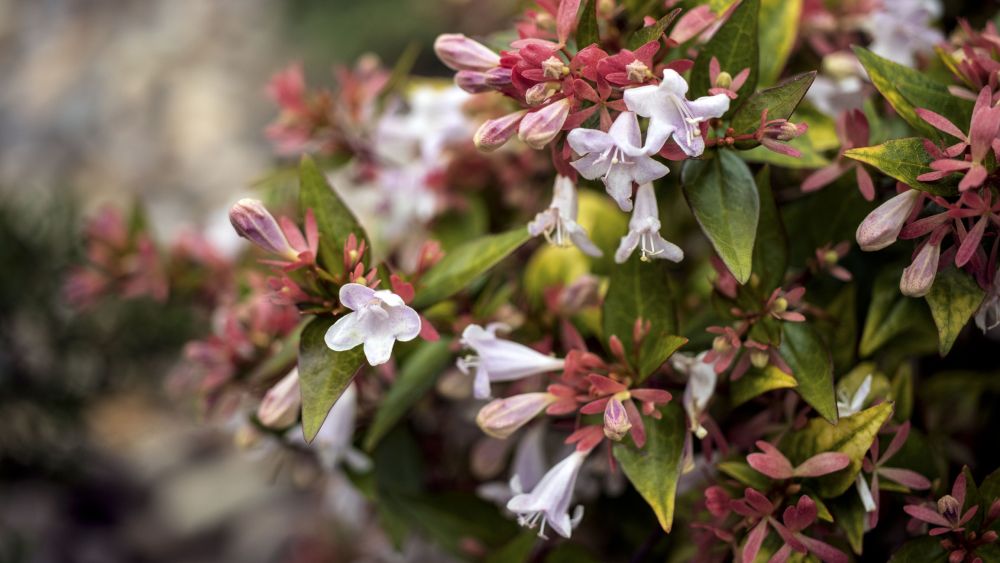Abelia Bush Care – How To Grow And Care For Abelia
The abelia bush is a versatile landscaping plant that you can use for borders, hillsides, or even grow in containers. Few ornamental bushes can tick so many decorative boxes while remaining easy to grow and maintain. But that’s the beauty of abelia.
And best of all, abelia has plenty of varieties and hybrids that give you a lot of options when designing your landscapes. You can grow it as a foundation in a border or plant it as a focal point. As for the dwarf types, they fit snugly in small containers and flourish in patios, gazebos, and to punctuate the angles of the deck.
If you’re new to the abelia world, this article gives you comprehensive coverage of the basics of growing the bush, tips of landscaping, and which varieties fit where in your garden.
Abelia at a Glance
A native of Japan and Mexico, abelia is a hardy shrub with a high tolerance for different types of soil and weather conditions. They grow in zones 4 to 11. To say that the ornamental shrubs are understated is in itself an understatement. For all their beauty and versatility, they have failed to catch on. Many gardeners and landscapers have never tried or even heard of them.
With about 30 species and hybrids, you’re spoilt for options. Abelia comes in different sizes and shapes. From the 3-foot dwarf to the 18-foot giant bush, each hybrid has its unique properties.
But that’s not even half the story. Besides the many varieties, the abelia has pleasant foliage and the bloom time is counted in months rather than in days. As for the leaves, they range from bright green to gold and purple. Most often the leaves start as green then change color throughout the seasons.
The flowers are usually bell-shaped and either white or pink. Each flower is about 2 inches long but since they grow in clusters, they catch your eye from a distance. Not to mention their strong and intoxicating fragrance that wafts about the garden and enters through an open window. Usually, the flowers open in the late spring and remain in bloom through the summer and early fall.
Abelia Varieties
Not all abelian varieties are suitable for all occasions and settings. For hedging purposes, you’ll need a medium-size abelia unless you have a large landscape. If you’re growing it on a slope or hillside, then the larger varieties will do best. Here are the top 5 abelia species to grow.
- Kaleidoscope Abelia: As the name implies, this versatile bush offers different colors with every season change. In the spring, the lush foliage is green. It morphs into gold in the summer before ending as fiery red in the fall. It averages 3 feet at maturity and its tiny flowers are white. Use it for a small hedge or as a groundcover.
- Abelia Grandiflora: Grows to about 6 feet so use it for a high hedge. The leaves are bright green with a glossy sheen. This is why this bush is often called the “glossy abelia”. The flowers are white and small and bloom from late spring until early fall. It attracts many pollinators throughout the summer.
- Edward Goucher Abelia: A medium-size hybrid that averages between 3 to 5 feet high and wide. The stunning foliage starts in the spring with a bronze tinge that vanishes in the summer. The summer also brings about lilac flowers that remain in bloom until the end of summer.
- Abelia Sunshine Daydream: A fitting name for a bush that offers colors in threes. In the spring the foliage is pink, white, and green. It quickly develops into yellow and green in the summer before settling into reddish hues in the fall and winter. The flowers are white and fragrant and stay in bloom throughout the summer.
- Abelia Rose Creek: This bush starts glossy green in the spring and ends bronze in the fall. But the species gets its name from its flowers. The flowers are white with hints of rosy blushes. It grows to 4 feet high and the same in width. You can grow it in a container with regular pruning to keep it compact.
Landscaping with Abelia
Experts recommend using abelia for different designs and ornamental purposes. If this is your first experience with this bush, here are a few tips to guide you along the way.
- Use abelia as a living fence to separate walkways from the rest of the garden.
- Break your landscape down into small gardens with the help of abelia hedges.
- Dwarf abelias are great as potted plants near the entrance, the patio, or the deck. Their fragrance will keep your summer evenings lively.
- Plant it near vegetable and fruit patches to attract pollinators such as hummingbirds, bees, and butterflies.
- Use them as backdrops for more showy annual flowers.
- Mix medium-size abelias with small trees to create unique hedges and borders.
How to Grow Abelia
When it comes to growing a bush or a tree for that matter, it’s always best to start with a young sapling. Even if you have the seeds, the abelia hybrids are quite unpredictable. You sow the seeds of a bush but end up with a totally different abelia that looks nothing like its parent. Once you have the young sapling from the local nursery, you’re ready to start.
- Start the abelia in the spring when the soil temperature is above 60 degrees Fahrenheit and the threat of the last frost is over.
- Break the top 12 inches of soil and mix in a good portion of aged manure to enrich the soil.
- Dig a hole in the tilled soil that matches the depth of the root ball of the sapling and is twice as wide.
- Ease the sapling out of the tarp or packaging it came in and inspect the roots. Ruffle them and trim off any damaged roots.
- Plant the sapling in the hole making sure the soil line aligns with the surface of the hole. Spread the roots so that they fill up the hole.
- Backfill the hole halfway and pack the soil firmly so that the abelia stands on its own upright.
- Water the sapling thoroughly to help the soil settle.
- Fill the rest of the hole with soil and build a berm around it to hold the water.
- Water the plant again and fill up the berm.
- Cover the soil with a 3-inch layer of mulch. Wood chippings or discarded leaves will do.
Abelia Care
One appealing quality about abelia is that they need minimum care and once established become quite independent. If you don’t have much time for maintaining the abelia, it won’t complain or show signs of stress. Except for pruning which is a must for all abelia types and varieties.
Soil
In most cases, you’ll need to amend the soil in the garden to suit the rather demanding abelia. If the soil is clayish and heavy, then you’ll need to add organic materials to loosen it up. The best options here are sand or a potting mix. Add the organic materials to the clay at a ratio of 1:2. If the soil is sandy and not likely to retain water, then you’ll need to amend it with peat moss or compost at the same ratio. As for the pH levels, abelia can thrive in a wide range of levels from 5.0 to 7.5. It is still worth your while to test the soil pH and bring it to the desired levels.
Water
The water needs of abelia vary as the bush grows and establishes. The newly transplanted sapling will need watering almost every day. The soil needs to be evenly moist to avoid putting the plant under a lot of stress. As the bush establishes, then cut back the watering by half. On average it needs about one inch of water a week during the first year. This amount will become less and less with every passing year. A mature abelia can withstand slightly dry soil where the top 3 inches of the soil are dry. Excessive and prolonged drought can have adverse effects on the bush.
Fertilizing
For all their lush green foliage and fragrant blooms, abelia bushes are not heavy feeders. If you start them in rich soil with plenty of organic materials, they most likely would need no further fertilizing during that first year. But you wouldn’t want to starve your bush. So side dress with organic compost and liquid fertilizer to keep the flowers blooming their brightest. Apply the fertilizer once every 4 to 6 weeks during the growing season. Start in the early spring and continue fertilizing until the end of summer. Once the flowers have faded, hold off fertilizing until the next spring.
Pruning
As versatile as the abelia bush is, pruning must be customized to fit the purpose of the bush. If you’re growing it as a hedge plant then pruning will be different from a bush growing on a slope or one in a container. Here are the main pruning abelia types based on the purpose and location of the bush.
Hedges
A hedge abelia has to look neat and in shape all the time. Otherwise, they’ll reduce the curb appeal of your lawn and turn the landscape into a scene from a post-apocalyptic flick. How many times you need to prune the bush depends on how vigilant you are. You’ll need to use hedge trimmers about three times during the spring and summer. Fast-growing bushes might need another trimming before the growing season is over.
Winter Pruning
This is an annual event for all types and abelia hybrids. Push it as far back into the winter as you can. The goal is to untangle branches that grow too close or cross each other. Remove damaged and broken branches and trim off runaway branches. You can use shears for this pruning. It’s meant to trigger new growth once spring arrives. So cut back the bush to its basic skeleton shape.
Rejuvenating Pruning
Abelia ages much like any other living thing. An aged abelia loses much of its luster and grows less foliage and fewer blooms as the years pass. So to encourage the bush to regain some of its youthful vigor, you need to intervene with your trusty shears. Start in the late winter when the bush is dormant and don’t spare any branches, old or new. The idea is to cut back the old bush to about 6 inches above the ground. By relieving it of its ancient frame, you trigger the bush to have a fresh start and become rejuvenated.


